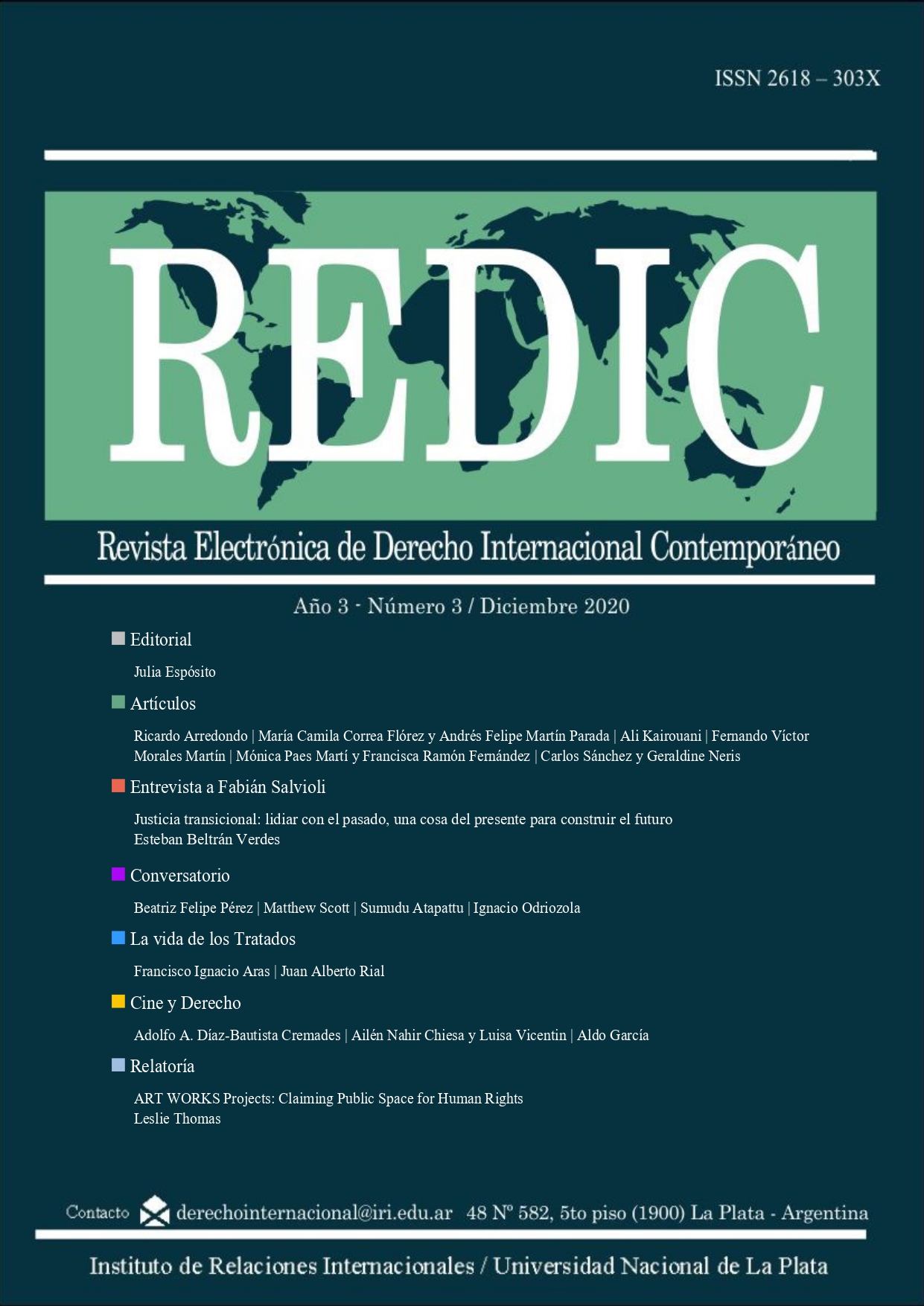International Law and the creation of fake news: Problems, challenges and legal framework
DOI:
https://doi.org/10.24215/2618303Xe003Keywords:
hybrid threats, fake news, principle of non-intervention, prohibition use of forceAbstract
Among the many manifestations of "hybrid threats" in international relations, one of the most difficult to be faced by international law is the creation and dissemination of fake news against States. The purpose of this article is to study which the different legal instruments are that could be applied to specific examples. In essence, this has to do with the principle of non-intervention in the internal affairs of States and the 1936 International Convention on the Use of Broadcasting in the Cause of Peace. This article will also check the difficulties that the application of these norms brings about, which have the power to classify this phenomenon as a possible international wrongful act, as well as the almost impossible attribution of these behaviors to the States themselves.
Downloads
References
Buchan, R. (2012). Cyber Attacks: Unlawful uses of force or prohibited interventions?. Journal of Conflicts & Security Law, vol. 17, nº 2.
Calvo Albero, J. L. (2009). La evolución de las insurgencias y el concepto de guerra híbrida. Revista Ejército de Tierra Español, nº 822. Ministerio de Defensa.
Díez de Velasco, M. (2013). Instituciones de Derecho Internacional Público. Tecnos, 18ª Edición.
Galán, C. (2018). Amenazas híbridas: nuevas herramientas para viejas aspiraciones. Documento de trabajo 20/2018. Real Instituto Elcano.
Tenenbaum, É. (2015). Hybrid Walfare in the Strategic Spectrum: an Historical Assement, en Lascojarias, G. y A. Larsen, J., eds., NATO’s Response to Hybrid Threats. Forum Paper 24. NATO Defence College.
Comisión Europea (2018). A Europe that protects: Countering Hybrid Threats.
Downloads
Published
How to Cite
Issue
Section
License
Aquellos autores/as que tengan publicaciones con esta revista, aceptan los términos siguientes:
- Los autores/as conservarán sus derechos de autor y garantizarán a la revista el derecho de primera publicación de su obra, el cuál estará simultáneamente sujeto a la Licencia de reconocimiento de Creative Commons (BY-NC-SA) 4.0 que permite a terceros compartir la obra siempre que se indique su autor y su primera publicación esta revista, no se haga uso comercial, y si se remezcla, se transforma o se crea a partir del material, se debe distribuir bajo la misma licencia del original.
- Los autores/as podrán adoptar otros acuerdos de licencia no exclusiva de distribución de la versión de la obra publicada (p. ej.: depositarla en un archivo telemático institucional o publicarla en un volumen monográfico) siempre que se indique la publicación inicial en esta revista.
- Se permite y recomienda a los autores/as difundir su obra a través de Internet (p. ej.: en archivos telemáticos institucionales o en su página web) antes y durante el proceso de envío, lo cual puede producir intercambios interesantes y aumentar las citas de la obra publicada. (Véase El efecto del acceso abierto).





















